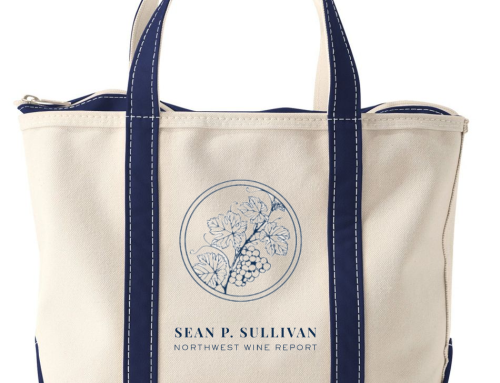This is part of a series of monthly posts called EAT & DRINK In The Northwest. The series is written by Marcus Pape and Melissa Peterman, authors of books by the same name. Read more about the series here.

Think Pink This Thanksgiving!
You may resist the idea of rosé wine for various conscious or subconscious reasons. Maybe your hesitation is due to the stigma created 20-years ago by a sweet pink wine known as Beringer White Zin, or maybe you just don’t like the idea of drinking something pink. Well you’re not alone because there are many people out there that faithfully declare “I won’t drink pink”…because it’s not serious wine?!?!
But when it comes to Thanksgiving dinner, pink is the jewel of the dining room table. Rosé by nature is one of the best, most food-friendly wine styles available in your pairing arsenal. It carries flavor and structure characteristics of both white and red wines, with the refreshing acidity of a white and tannic backbone of a red (depending on skin contact). And, with so many varying dishes and flavors stacked across the table on Thanksgiving you need the pairing flexibility that rosé provides.
So, the next time you’re struggling with what wine to bring for Thanksgiving dinner or if you just don’t feel like trying so hard, rosé is your go to option. Best of all, rosé wines tend to be less expensive than either of their full-blooded counter parts.
Rosé 101:
-Most high-quality rosés are made from red grape varietals.
-The color can range from fleshy to brilliant cherry red, depending on length of skin contact after crushing.
-The grape variety used can also affect the color.
-Rosé wines are DRY! Blush wines are soft and rather sweet.
-They’re meant to be enjoyed young.
-They are often fruity, showing cherry, melon and berry flavors, but can also be spicy, floral or minerally.
-Available in bubbly or still.
-Rosés are perfect summer wines but should also be enjoyed in fall and winter when a multitude of flavors/dishes are being served.
Recommended Washington Rosés: (current vintage and availability will vary)
Maryhill 2006 Rosé of Sangiovese
Saint Laurent 2006 Syrah Rosé
Syncline Wine Cellars 2007 Rosé
Barnard Griffin 2007 Reserve Rosé of Sangiovese
Alexandria Nicole 2007 Estate Cabernet Franc Back Room Rosé
Ardenvoir 2007 Rosé
Red Sky Winery 2008 Merlot Rosé
Cedergreen Cellars 2008 Viola
Hogue Cellars 2008 Terroir Sangiovese Rosato
Vin du Lac NV LEHM Rosé of Cabernet Franc & Sangiovese
Chateau Ste. Michelle 2007 Nellie’s Garden Dry Rosé
Chinook 2008 Cabernet Franc Rosé
Sleight of Hand Cellars 2008 “Magician’s Assistant” Rosé
—
If you love good food and wine, it’s quite likely that Thanksgiving is one of your favorite holidays. With so many dishes and sides there’s always an abundance of flavors and aromas wafting from the kitchen into the dining room. It’s a magical time of year where variety is the name of the game. And luckily, rosé wines make it easy when contemplating your menu selection.
Here is a flavorful twist to the everyday “potato side dish,” that will suddenly become a requirement for several Thanksgivings to come.
Warm Fingerling Potato Salad with Herb Vinaigrette (Makes 4 side dishes)
Paired with Columbia Crest 2007 Two Vines Vineyard 10 Rosé Wine, Washington
10 fingerling potatoes, halved
2 T. olive oil
Coarse salt and cracked black pepper
½ c. small diced sweet onion
Warm Herb Vinaigrette
3 T. olive oil
2 T. minced shallot
Coarse salt and cracked black pepper
1 tsp. Dijon mustard
1 T. red wine vinegar
1 T. fresh picked thyme, plus more for garnish
1 T. minced fresh sage
1 T. minced fresh oregano
Preheat oven to 375°F
In a bowl, toss sliced fingerling potatoes in olive oil and a pinch of salt and pepper to coat. Place fingerlings skin side up onto a baking sheet and cook for 15 minutes. Flip potatoes over and bake for another 5 minutes until tender. Remove from the oven and set aside.
Meanwhile, add 2 tablespoons of olive oil to a large sauté pan over high heat. Once pan is hot, add sweet onions, reduce heat to medium high and sauté, stirring occasionally for 5 minutes. Reduce heat to low and cook for another 3 minutes. Remove onions onto a plate and set aside.
To make the vinaigrette, use the same sauté pan and add 1 tablespoon 
For more information about EAT & DRINK In The Northwest or for additional recipes please visit www.EatDrinkNorthwest.com.








Leave A Comment